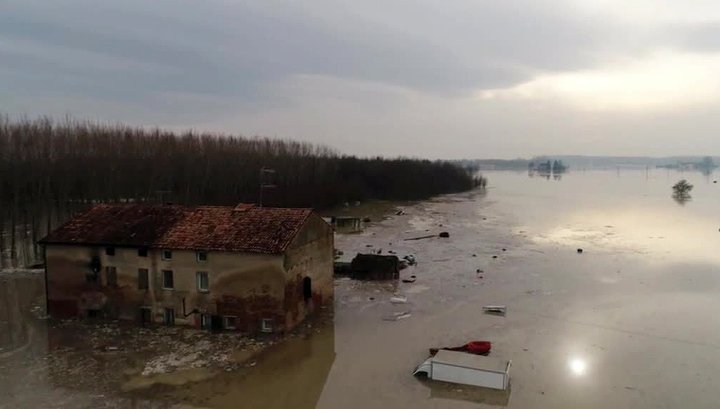Emilia-Romagna Floods: Impact on Local Agribusiness
Since the start of May, the Northern Italian region of Emilia-Romagna has endured heavy rainfall culminating in flash flooding across the region. At time of writing, the region’s weather alert agency classified the provinces of Modena and Bologna at a moderate risk of flooding and gave high-risk flood warnings to the provinces of Ferrara, Ravenna, Forlì-Cesena, and Rimini. Bologna remains at high risk of landslides, although in neighbouring provinces there is only a moderate risk. Satellite imagery published by NASA’s Earth Observatory illustrates the severity of the flooding in farmland near the town of Lugo, in the Province of Ravenna.
Map 1 - Emilia-Romagna Provincial Map. Available here.
Emilia-Romagna is Italy’s fourth region in terms of GDP output behind Lombardy, Latium, and Veneto. The region’s diverse economy is made up of agriculture, manufacturing, and textiles sectors. In the first half of 2022, agricultural output was valued at €575 million ($621 million), just under two per-cent of all regional output. Although agricultural output in the primary sector does not amount to much of the region’s economic output, the processing of agricultural products in the secondary sector represents almost a fifth of Italy’s total agricultural value chain and agri-food exports represent over ten per-cent of the region’s exports, according to information published by the regional government of Emilia-Romagna.
The collateral damage faced by Emilian farmers is not just economic. The region’s farmers produce 44 geographically-protected agricultural products such as Parmigiano Reggiano, Parma ham, balsamic vinegar, and Lambrusco wine. In addition to this, the region’s farmers and their respective research partners are field-leading innovators of food safety farming practices. This has led Confagricoltura – an Italian farming association – to describe the situation as having the potential to trigger a significant socio-economic gulf within the region, due to the costs of rebuilding. Currently, Confagicoltura estimates a cost of approximately €40,000-50,000/hectare for fruit farmland ($43,250-$54,060/hectare) and €6,000/hectare for grain and cereal farmers ($6,490/hectare), not to mention the years it will take for affected farms to return to capacity-level production. Notwithstanding, the large part of the region’s spring harvests are pretty much written off as fruit trees suffer from root rot and 400,000 tonnes of wheat have been lost.
The figures reported above only represent the immediate cost for the 5,000 farms impacted by the floods, and do not consider the longer-term social and economic costs associated with the loss of assets and labour of Emilian farmers – not to mention the increase in costs of secondary food products which are the heart of gastrotourism in the region. For the Italian government, there is the question of financing reparations and rebuilding. At the moment, some €100 million ($108 million) have been approved by the central government for relief spending in Emilia-Romagna, as head of government Giorgia Meloni explores the use of the European Union’s Solidarity Fund.
Cover Image Credits: International News - The Chronicles of Life. Available here.


